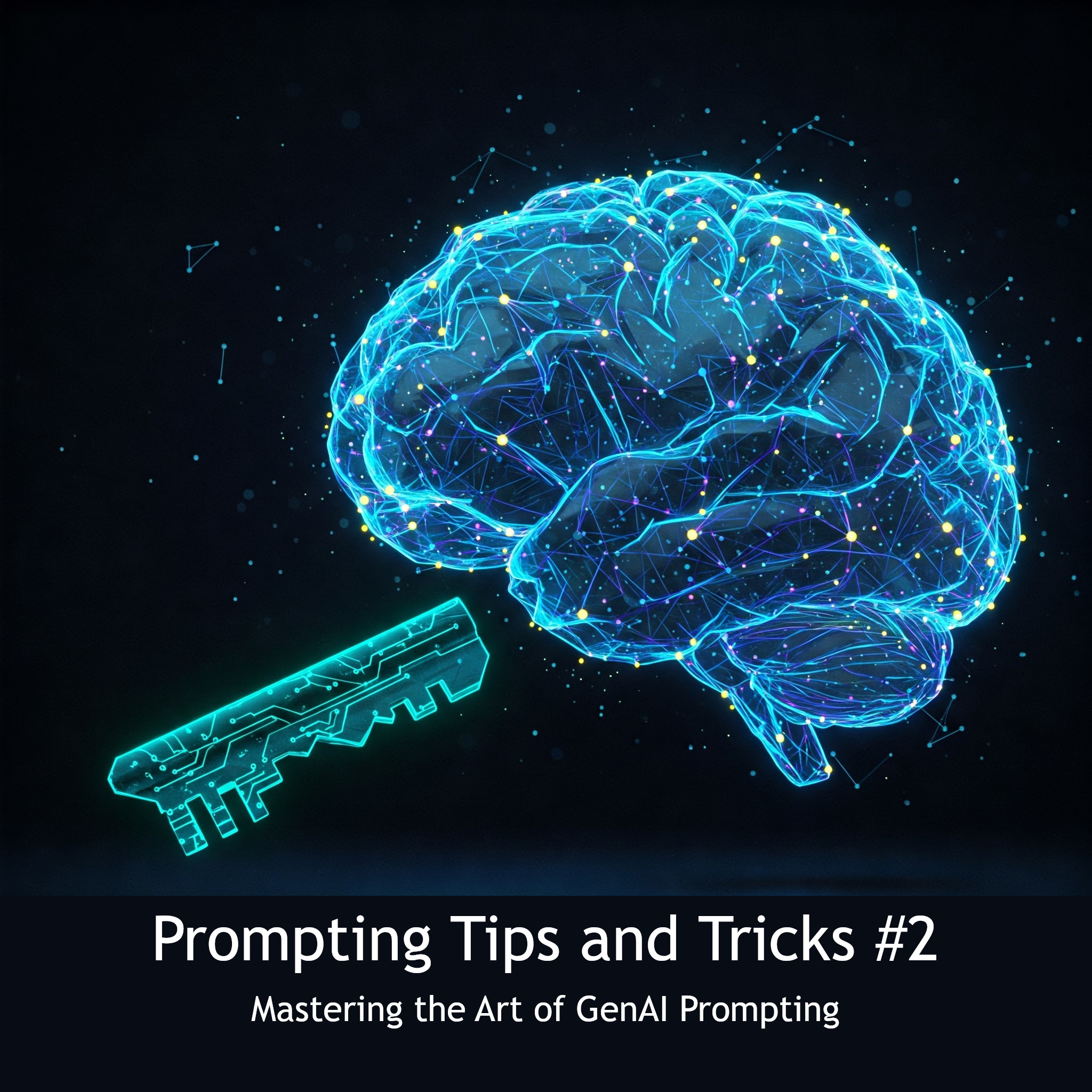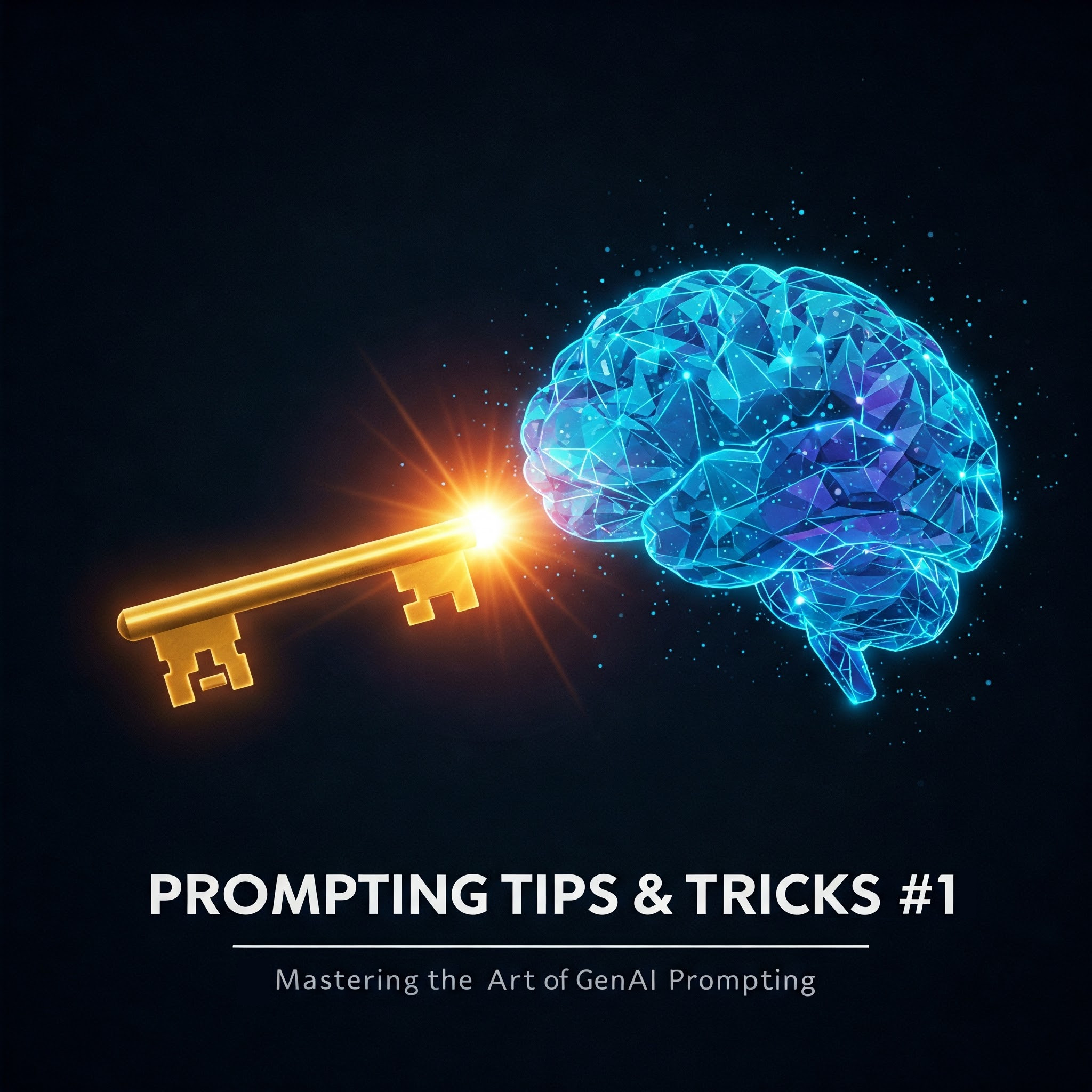Table of Contents
In the previous two blog posts, I laid the groundwork for effective prompt engineering, covering fundamental concepts and essential tips and tricks. Now, let’s venture into the realm of advanced prompting techniques. These methods allow for sophisticated interactions with AI models, enabling you to tackle complex tasks, generate more nuanced outputs, and push the boundaries of what’s possible with AI tools.
Advanced Prompting Techniques
1. Few-Shot Prompting
Few-shot prompting involves providing the AI with a small number of input-output examples within the prompt itself. This technique helps the model understand the desired pattern or style and generate responses that align with those examples. It’s particularly useful when you want the AI to perform a specific task or follow a particular format by understanding given examples without explicitly stating all the rules.
Example prompt
Translate the following English phrases to French:
English: Hello, how are you?
French: Bonjour, comment ça va?
English: What is your name?
French: Quel est votre nom?
English: How old are you?
French:
English: Thank you very much.
French:
With a prompt such the above, the AI is more likely to correctly translate “How old are you?” to “Quel âge avez-vous?” using the examples of given translations.
2. Chain-of-Thought Prompting
Chain-of-thought (CoT) prompting encourages the AI to break down a complex problem into a series of intermediate steps, mimicking human-like reasoning. By explicitly asking the model to explain its thinking process, you can often improve the accuracy and coherence of its final answer, especially for tasks that require logical deduction or multi-step reasoning; for example, a maths problem.
Example prompt
“The cafeteria had 23 apples. If they used 20 to make lunch and then bought 6 more, how many apples do they have left? Let’s think step by step.”
Example response
The AI would then ideally respond with a step-by-step breakdown:
1. Start with 23 apples.
2. Used 20 apples: 23 - 20 = 3 apples.
3. Bought 6 more apples: 3 + 6 = 9 apples.
4. Answer: They now have 9 apples.
By prompting the AI to “think step by step,” you guide it to perform the calculation in a logical sequence, increasing the probability of a correct answer.
3. Tree-of-Thought Prompting
Tree-of-thought (ToT) prompting builds upon the chain-of-thought approach by allowing the AI to explore multiple reasoning paths at each step. Instead of following a single line of thought, the model can generate and evaluate different potential next steps, leading to a more robust and creative problem-solving process.
You can ask AI to perform deep reasoning and come up with multiple answers with more details about each of them. This technique is particularly useful for tasks that require exploration, decision-making, or generating diverse solutions.
Example prompt
Imagine asking the AI to brainstorm marketing strategies for a new product using this prompt: “Brainstorm marketing strategies for a new product (for example, an electronic keyboard). Explore all possible strategies with a few lines of details on each of them. Format details on each strategy as sub points.”
Example response
Search Engine Marketing (SEO & PPC)
- SEO: Optimize website and product pages for relevant, high-intent keywords to improve organic search rankings.
- PPC: Launch Google Ads and Shopping campaigns to capture buyers actively searching for electronics.
- Remarketing: Use retargeting ads to re-engage visitors who didn’t convert on their first visit.
Social Media Marketing (Organic & Paid)
- Organic Content: Share product demos, unboxing videos, and behind-the-scenes content to build excitement.
- Paid Ads: Run targeted ads on platforms like Instagram, Facebook, and TikTok to reach tech-savvy audiences.
- Engagement: Host Q&A sessions, polls, and interactive stories to foster community and gather feedback.
Influencer Marketing
- Tech Influencers: Partner with established tech reviewers and YouTubers for authentic product reviews.
- Micro-Influencers: Collaborate with niche influencers for deeper engagement within specific communities.
- Unboxing & Tutorials: Sponsor unboxing and how-to videos to showcase features and usability.
Content Marketing
- Educational Guides: Publish comparison guides, buyer’s guides, and troubleshooting articles.
- Blog Posts: Regularly update a blog with product updates, industry news, and expert opinions.
- Video Content: Create explainer videos and customer testimonial reels to build trust.
(the list goes on till 15-20 strategies …)
While directly implementing ToT in a single prompt might be complex, the underlying principle is to encourage the AI to consider multiple options and evaluate their potential. This can be achieved through careful prompting that asks for alternative approaches or encourages the exploration of different perspectives or solutions. You can also ask the AI to sort the output based on their success probabilities.
4. Using Knowledge Integration Techniques
AI models are trained on a vast amount of data, but even then its learning can fall short for your situation. For tasks that require access to specific information or knowledge beyond the AI’s training data, you can employ techniques to integrate external knowledge (say, your organisation’s knowledge base) into your prompts.
- Providing relevant documents or text snippets directly within the prompt. As it is shown to provide content using delimiters .
- Instructing the AI to use specific tools or APIs (if the platform allows). Some advanced platforms enable the AI to interact with external data sources like the Internet or specific data sources.
- Combining prompting with retrieval-augmented generation (RAG) techniques. This involves first retrieving relevant information from a knowledge base and then incorporating it into the prompt.
5. Prompt Chaining
Prompt chaining involves using the output of one prompt as the input for the next, creating a sequence of interconnected prompts that progressively build towards a final goal. This allows you to break down complex tasks into a series of smaller, more manageable steps and leverage the AI’s output at each stage. This also allows you to check AI’s output at every step and make necessary amends to your prompts to get the desired result.
Example prompt & response
- Prompt 1: “Write a brief description of a futuristic city.”
- Response 1: “[A vivid description of a futuristic city with flying vehicles and towering skyscrapers.]”
- Prompt 2: “Based on the description you just provided, generate three potential plot ideas for a science fiction story set in that city.”
The Journey Continues
Advanced prompting techniques open up a new level of interaction with AI models, enabling you to tackle more complex and creative challenges. As AI technology continues to evolve, so too will the art of prompt engineering. By continuously experimenting and exploring these advanced methods, you can stay at the forefront of AI communication and unlock its full potential.
References
- ChatGPT Prompt Engineering for Developers (from OpenAI) [ DeepLearning.AI (original) (archived) ]


